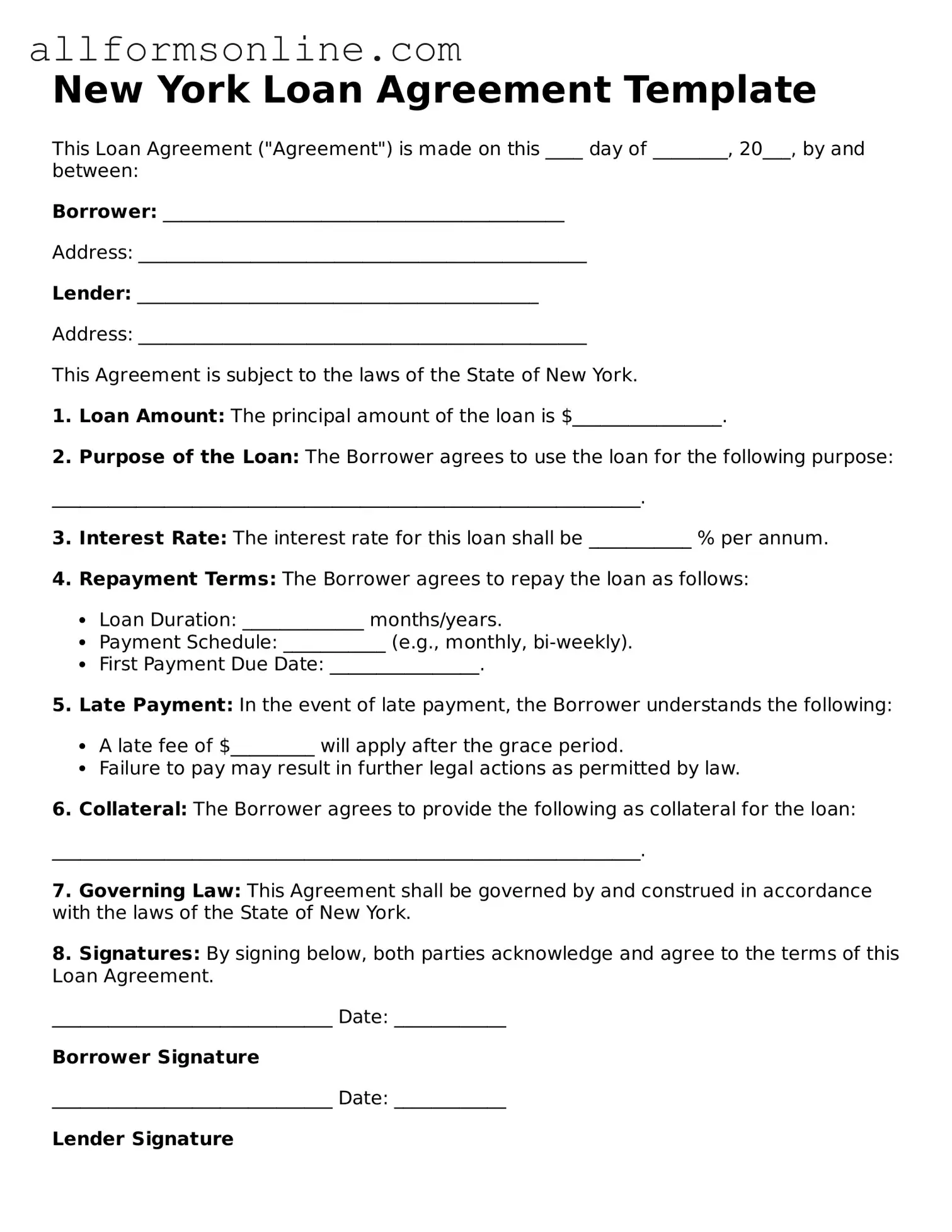What is a New York Loan Agreement form?
The New York Loan Agreement form is a legal document that outlines the terms and conditions under which a loan is provided. It serves as a contract between the lender and the borrower, detailing important aspects such as the loan amount, interest rate, repayment schedule, and any collateral involved. This form is crucial for ensuring that both parties understand their rights and obligations, thereby minimizing the potential for disputes in the future.
Who should use a New York Loan Agreement form?
This form is suitable for individuals or entities looking to formalize a loan transaction in New York. Whether you are a private lender extending a loan to a friend or a business providing financing to another company, utilizing this agreement can help protect your interests. It is advisable for both parties to review the terms carefully and consider seeking legal advice to ensure the agreement meets their needs.
What key elements should be included in the Loan Agreement?
A comprehensive Loan Agreement should include several key elements. First, it should clearly state the names and addresses of both the lender and the borrower. Next, it should specify the loan amount and the interest rate, whether fixed or variable. Additionally, the repayment terms, including the schedule and any penalties for late payments, should be clearly outlined. Finally, any collateral securing the loan must be described, along with provisions for default and dispute resolution.
Is it necessary to notarize the Loan Agreement?
While notarization is not always required for a Loan Agreement to be legally binding in New York, it is highly recommended. Having the document notarized can provide an extra layer of protection by verifying the identities of the parties involved and ensuring that they signed the agreement willingly. This can be particularly useful in the event of a dispute, as it adds credibility to the document.
Can the Loan Agreement be modified after it is signed?
Yes, a Loan Agreement can be modified after it is signed, but any changes must be documented in writing and agreed upon by both parties. It is essential to specify the modifications clearly to avoid confusion later. Both parties should sign the amended agreement to ensure that the changes are enforceable. Keeping open communication throughout the loan period can help facilitate any necessary adjustments.
